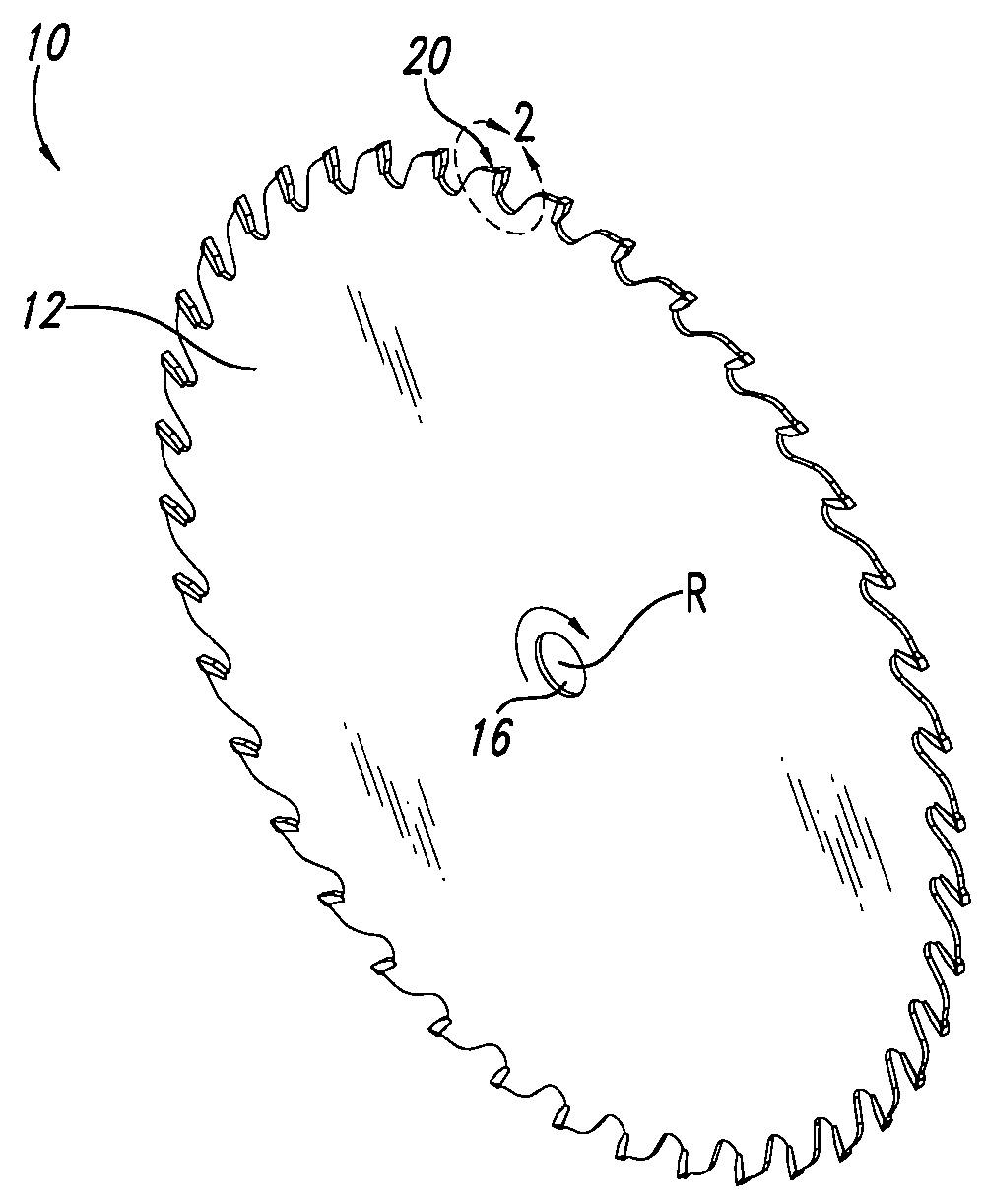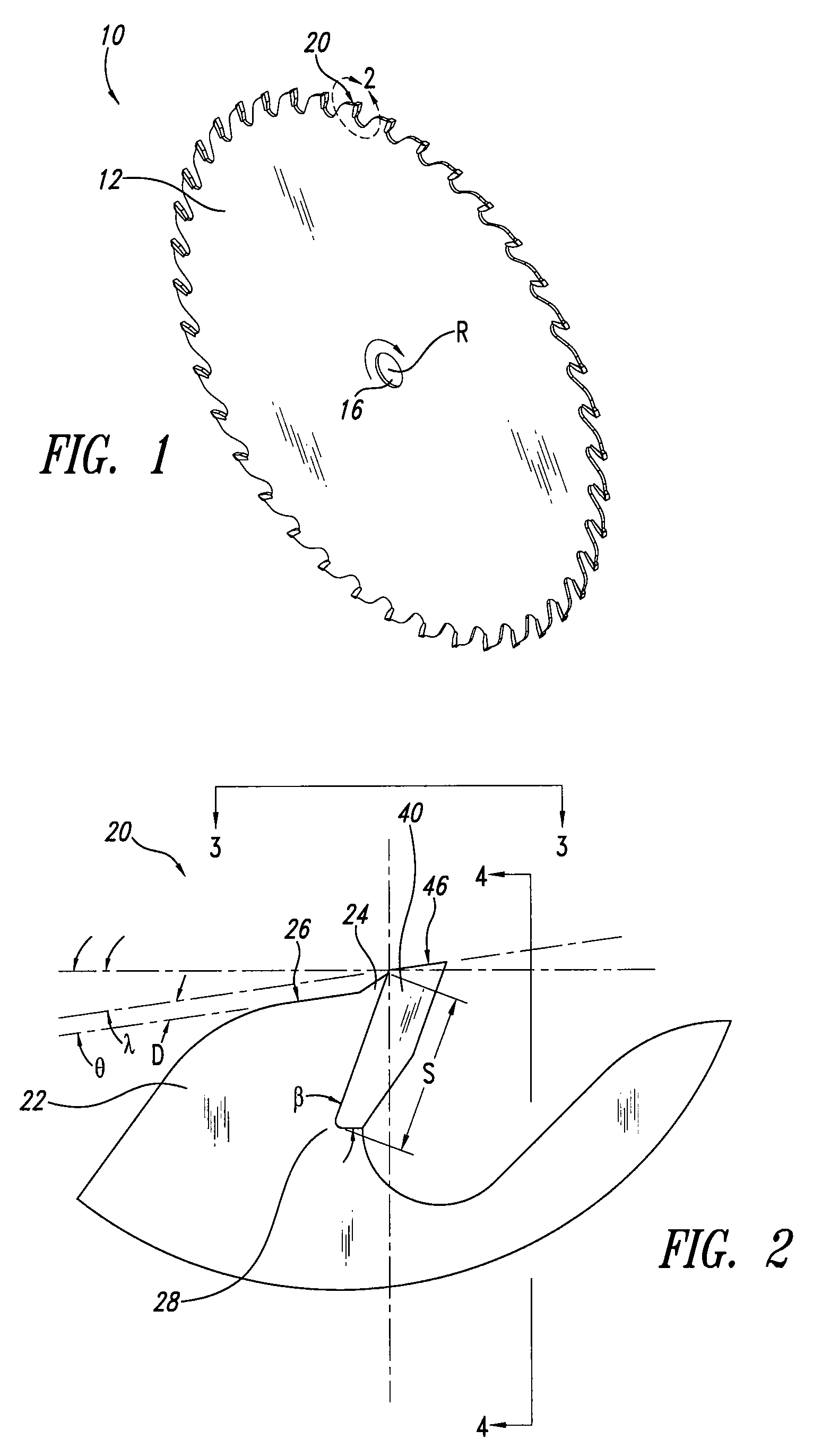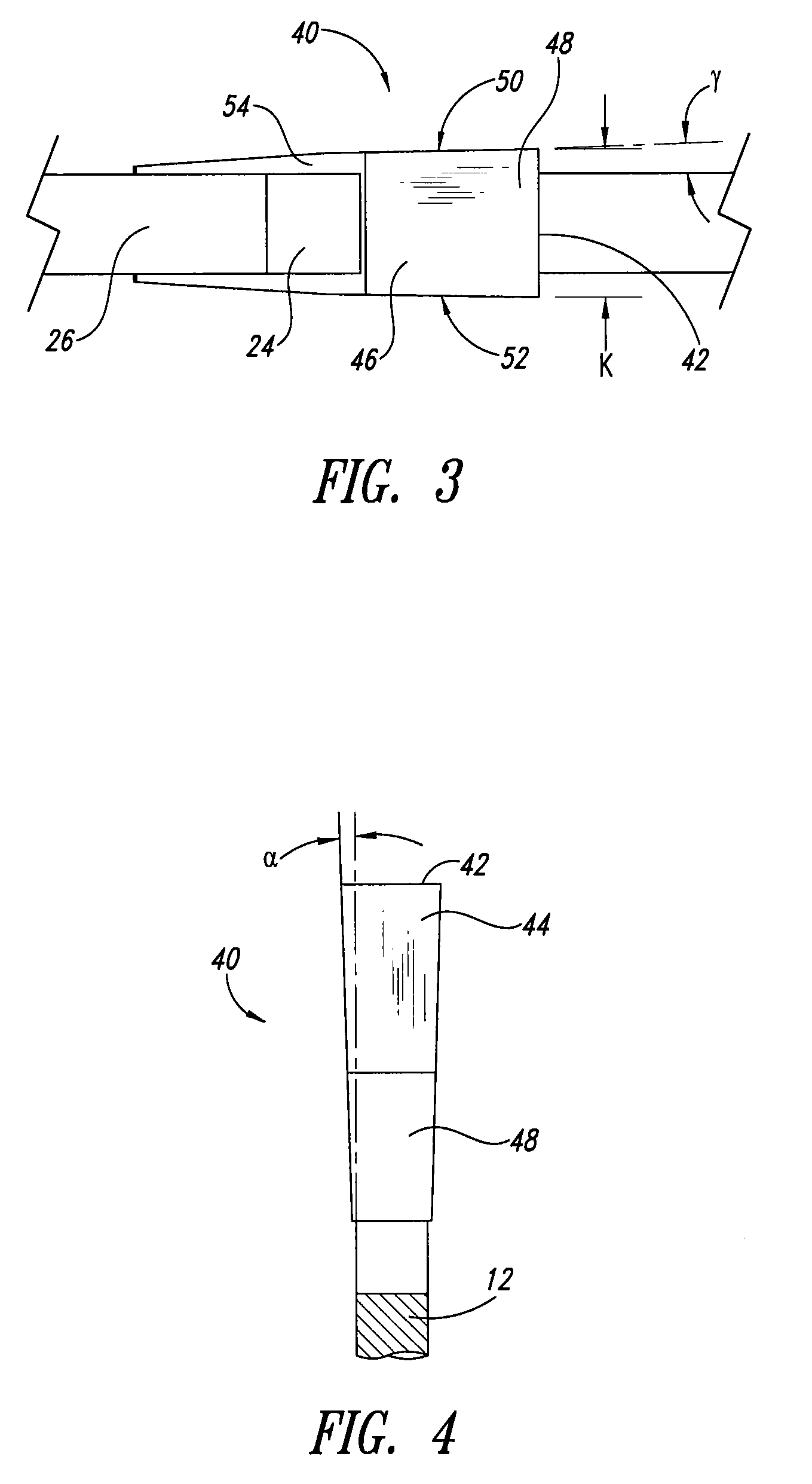Saw blade and method of manufacturing the same
a technology of saw blades and manufacturing methods, applied in the field of saw blades, can solve the problems of reducing productivity, reducing productivity, and reducing productivity, and achieve the effect of constant width, constant width, and substantial constant initial cutting width
- Summary
- Abstract
- Description
- Claims
- Application Information
AI Technical Summary
Benefits of technology
Problems solved by technology
Method used
Image
Examples
Embodiment Construction
[0016]FIGS. 1 through 5 illustrate one embodiment of a circular saw blade 10 having enhanced wear and performance characteristics particularly suitable for use in the lumber industry. As shown in FIG. 1, the saw blade 10 includes a plurality of teeth 20 spaced about the periphery of a substantially circular body 12. The blade 10 further includes a central aperture 16 for mounting the blade 10 on the arbor of a conventional circular saw. The teeth 20 of the saw blade 10 are spaced about the periphery of the blade body 12 with gullets located therebetween to assist in chip removal. In operation, the blade 10 rotates about a center of rotation R in the direction indicated in FIG. 1.
[0017]With reference to FIG. 2, each tooth 20 includes a cutting tip 40 secured to a tip support region 22. The tip support region 22 includes a tip seat 28 for receiving the cutting tip 40 and providing structural support thereto. The cutting tips 40 are preferably made of a hardened material, for example, ...
PUM
| Property | Measurement | Unit |
|---|---|---|
| receiving angle | aaaaa | aaaaa |
| receiving angle | aaaaa | aaaaa |
| width | aaaaa | aaaaa |
Abstract
Description
Claims
Application Information
 Login to View More
Login to View More - R&D
- Intellectual Property
- Life Sciences
- Materials
- Tech Scout
- Unparalleled Data Quality
- Higher Quality Content
- 60% Fewer Hallucinations
Browse by: Latest US Patents, China's latest patents, Technical Efficacy Thesaurus, Application Domain, Technology Topic, Popular Technical Reports.
© 2025 PatSnap. All rights reserved.Legal|Privacy policy|Modern Slavery Act Transparency Statement|Sitemap|About US| Contact US: help@patsnap.com



